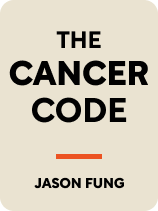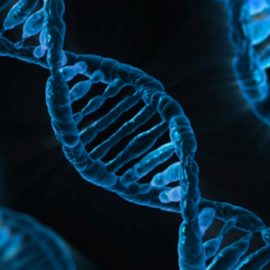

This article is an excerpt from the Shortform book guide to "The Cancer Code" by Jason Fung. Shortform has the world's best summaries and analyses of books you should be reading.
Like this article? Sign up for a free trial here.
What exactly is cancer, and why is it so hard to treat? Why is cancer so prevalent? How close are we to eradicating cancer?
Cancer is one of the most frightening diseases in the world today. It’s deadly and often extremely hard to cure. As such, doctors and researchers have spent enormous amounts of time and money trying to figure out exactly what cancer is, how it works, and how to cure it.
In this article, you’ll learn about the progress we’ve made toward our understanding of cancer.
Cancer as Uncontrolled Growth
In order to treat cancer, scientists first had to answer the question: What exactly is cancer? In other words, they needed to figure out what was going wrong with patients’ bodies so that they could determine how to fix the problems.
Fung says that scientists’ earliest understanding of cancer—dating at least back to Ancient Egypt—was simply a description of its symptoms, most notably the tumors that form in patients’ bodies. As such, many scientists developed an understanding of cancer as an abnormal growth that would eventually kill its victim. Others believed that cancer was caused by an imbalance of black “bile” in the body.
(Shortform note: Both this book and Siddhartha Mukherjee’s The Emperor of All Maladies discuss the Ancient Greek belief, dating to around 130 AD, that cancer was caused by an imbalance of black bile (which we now know doesn’t exist). However, Mukherjee adds that the theory—though wrong—was extraordinary for its time because it recognized that cancer was a systemic problem rather than a localized growth. Once the “black bile” theory was disproven, it would be nearly two thousand years before modern doctors rediscovered that fact.)
Working from this very early and incomplete model, it seemed like cancer should be treated by destroying or removing the tumors. However, as Fung points out, a simple description of cancer’s symptoms didn’t address how or why those tumors formed, so doctors’ attempts at treatment almost invariably failed. Indeed, up until the last 100 years or so, medical texts all agreed that cancer was incurable.
(Shortform note: Hippocrates, an ancient Greek physician who’s often called the father of modern medicine, was one such doctor who wrote about the futility of trying to cure cancer. Instead, he urged doctors to offer comfort to their patients—perhaps one of the earliest examples of hospice care. Until quite recently, with enormously improved knowledge and modern treatment options, relieving symptoms and keeping patients comfortable was the best doctors could do when faced with cancer.)
What Is Cancer, Really?
This early understanding of cancer merely as a harmful tumor was woefully incomplete. Thanks to decades of dedicated research, we now have a much better understanding of what cancer is and how it works.
Fung tells us that cancer is not a single disease, but rather a type of disease. Almost every cell in the body has the potential to turn cancerous, and each cancer will be different depending on where it’s located and what type of cells are affected. However, all cancers have some things in common:
Rapid, endless cell division. Cancer cells divide quickly and ignore the chemical signals that normally cause that process to stop. Furthermore, while there is normally a limit to how many times a particular cell can divide, cancer cells can keep doing so forever. This is because cells contain structures called telomeres at the ends of their chromosomes; normally, telomeres shorten each time a cell divides, and the cell undergoes apoptosis (cell death) once the telomeres become too short. However, cancer cells use an enzyme called telomerase to rebuild them, meaning the malignant cells are functionally immortal.
(Shortform note: Telomerase is one reason why cancer grows so uncontrollably, but it also provides a promising target for cancer therapy. Healthy cells don’t use telomerase—so, if doctors found a way to stop telomerase from working, the cancer cells would rapidly divide until they die while normal cells would be unaffected. However, as of writing this guide, telomerase-targeted therapy is still being studied for effectiveness and safety, and therefore isn’t ready for use on patients yet.)
Metastasis and invasion. Cancerous cells break away from the primary tumor and travel throughout the body, creating secondary tumors in other locations. Fung says that this process, called “metastasis,” is what separates benign tumors from malignant ones and what makes cancer so dangerous. A benign tumor can grow to enormous size without causing much harm to the patient, but a metastatic tumor—one that sheds cells into different types of tissue where those cells don’t belong—is deadly.
(Shortform note: Cancer cells seem to possess a near-limitless ability to invade other tissues. For example, The Immortal Life of Henrietta Lacks describes how cells cultured from a particular strain of cancerous tissue attached to tissue samples taken from other people, and even from other species. Any sample contaminated in this way eventually became overrun by those cancerous cells.)
Co-opting nutrients and energy. Cancerous tumors induce nearby blood vessels to grow throughout the tumor, a process called angiogenesis, thereby providing the malignant cells with oxygen and other nutrients. Also, cancer cells usually use a fast but inefficient method of producing energy, meaning that they use up much more glucose (sugar) than ordinary cells.
(Shortform note: Because tumors need constant blood flow to grow and spread, one method of treating cancer involves using angiogenesis inhibitors to starve the tumor of nutrients and thereby stifle its growth. However, since angiogenesis inhibitors don’t directly kill cancer cells, they often have to be given over a long period of time and in conjunction with other treatments to fully cure cancer.)
In short, cancer is a type of disease where your own cells parasitize your body. Malignant cells grow, divide, and spread, fueling themselves by consuming enormous amounts of energy and nutrients, all while evading your natural defenses.

———End of Preview———
Like what you just read? Read the rest of the world's best book summary and analysis of Jason Fung's "The Cancer Code" at Shortform.
Here's what you'll find in our full The Cancer Code summary:
- A guide on what cancer is and how it works
- A deep dive into the three different models of cancer
- Why there is hope for the future of cancer treatments






